TROJ_FAKEAV.KQWL
SecurityEssentialFraud (Symantec); Rogue:Win32/FakePAV (Microsoft)
Windows 2000, Windows XP, Windows Server 2003


Threat Type: Trojan
Destructiveness: No
Encrypted: Yes
In the wild: Yes
OVERVIEW
This Trojan poses as a legitimate antivirus software using various commercial names. Similar to other FAKEAV variants, TROJ_FAKEAV.KQWL also displays several graphical users interfaces (GUIs) to users in an attempt to convince them of system infection and to purchase this purported cleaning software.
To get a one-glance comprehensive view of the behavior of this Trojan, refer to the Threat Diagram shown below.

Once users have decided to purchase this rogue product, they are then directed to a website asking for some information, such as their credit card numbers.
It shows fake online AV scan results in order to lure the user to install itself.
This Trojan may be unknowingly downloaded by a user while visiting malicious websites. It may be manually installed by a user.
It connects to certain websites to send and receive information. However, as of this writing, the said sites are inaccessible.
TECHNICAL DETAILS
Arrival Details
This Trojan may be unknowingly downloaded by a user while visiting malicious websites.
It may be manually installed by a user.
Installation
This Trojan drops the following files:
- %User Temp%\skahgfhasd.bat - file used to delete itself
(Note: %User Temp% is the current user's Temp folder, which is usually C:\Documents and Settings\{user name}\Local Settings\Temp on Windows 2000, XP, and Server 2003.)
It drops the following copies of itself into the affected system:
- %User Profile%\Application Data\hotfix.exe
(Note: %User Profile% is the current user's profile folder, which is usually C:\Windows\Profiles\{user name} on Windows 98 and ME, C:\WINNT\Profiles\{user name} on Windows NT, and C:\Documents and Settings\{user name} on Windows 2000, XP, and Server 2003.)
Autostart Technique
This Trojan adds the following registry entries to enable its automatic execution at every system startup:
HKEY_CURRENT_USER\Software\Microsoft\
Windows NT\CurrentVersion\Winlogon
Shell = "%User Profile%\Application Data\hotfix.exe"
Other System Modifications
This Trojan adds the following registry keys:
HKEY_CURRENT_USER\Software\PID
Process Termination
This Trojan terminates the following processes if found running in the affected system's memory:
- ACDaemon.exe
- ACService.exe
- AcroRd32.exe
- Acrobat.exe
- Acrobat_sl.exe
- Acrotray.exe
- Adobe Media Player.exe
- AdobeARM.exe
- AdobeUpdater.exe
- Adobe_Updater.exe
- AppleMobileDeviceHelper.exe
- AppleMobileDeviceService.exe
- ApplicationUpdater.exe
- BDTUpdateService.exe
- BJMyPrt.exe
- Babylon.exe
- BabylonAgent.exe
- Bandoo.exe
- BandooUI.exe
- BcmSqlStartupSvc.exe
- CEC_MAIN.exe
- CLCapSvc.exe
- CLMLSvc.exe
- CLMSServer.exe
- CLSched.exe
- COCIManager.exe
- CSmileysIM.exe
- CTsvcCDA.exe
- DVDAgent.exe
- DVDLauncher.exe
- DellVideoChat.exe
- DesktopWeather.exe
- DivXUpdate.exe
- EasyShare.exe
- FlashUtil10a.exe
- FlashUtil10b.exe
- FlashUtil10c.exe
- FlashUtil10d.exe
- FlashUtil10e.exe
- FlashUtil10h_ActiveX.exe
- FlashUtil10i_ActiveX.exe
- FrostWire.exe
- GoogleDesktop.exe
- GoogleDesktopCrawl.exe
- GoogleDesktopDisplay.exe
- GoogleDesktopIndex.exe
- GoogleToolbarInstaller_updater_signed.exe
- GoogleToolbarUser.exe
- GoogleUpdater.exe
- ICQ Service.exe
- IELowutil.exe
- IEMonitor.exe
- IEUser.exe
- KodakSvc.exe
- LWS.exe
- LimeWire.exe
- LogitechDesktopMessenger.exe
- LogitechUpdate.exe
- MSCamS32.exe
- Monitor.exe
- MySpaceIM.exe
- NBService.exe
- NMBgMonitor.exe
- NMIndexStoreSvr.exe
- NMIndexingService.exe
- NkMonitor.exe
- PCMAgent.exe
- PDVDDXSrv.exe
- PDVDServ.exe
- PMVService.exe
- PhotoshopElementsFileAgent.exe
- PictureMover.exe
- Quickcam.exe
- Reader_sl.exe
- RealPlay.exe
- RichVideo.exe
- RoxWatch9.exe
- SeaPort.exe
- SearchProtection.exe
- SiteRankTray.exe
- Skype.exe
- SkypeNames.exe
- SkypeNames2.exe
- SmoothView.exe
- SoftwareUpdate.exe
- SweetIM.exe
- TNaviSrv.exe
- TVAgent.exe
- TWebCamera.exe
- TWebCameraSrv.exe
- TomTomHOMERunner.exe
- TomTomHOMEService.exe
- ULCDRSvr.exe
- ViewMgr.exe
- WLIDSvcM.exe
- Weather.exe
- WebcamDell.exe
- WerCon.exe
- YMailAdvisor.exe
- YahooAUService.exe
- YahooMessenger.exe
- YouCam.exe
- ZuneLauncher.exe
- aim.exe
- aim6.exe
- apdproxy.exe
- bittorrent.exe
- chrome.exe
- cmd.exe
- ehRecvr.exe
- ehmsas.exe
- ezprint.exe
- firefox.exe
- gamevance32.exe
- iPodService.exe
- iTunes.exe
- iTunesHelper.exe
- iWinTrusted.exe
- iexplore.exe
- iviRegMgr.exe
- java.exe
- javaw.exe
- lexbces.exe
- mcrdsvc.exe
- msmsgs.exe
- msn.exe
- msnmsgr.exe
- onenotem.exe
- ooVoo.exe
- opera.exe
- outlook.exe
- pctsAuxs.exe
- pctsSvc.exe
- plugin-container.exe
- prismxl.sys
- qttask.exe
- realsched.exe
- regedit.exe
- rstrui.exe
- safari.exe
- shellmon.exe
- skypePM.exe
- sprtsvc.exe
- taskmgr.exe
- tfswctrl.exe
- traybar.exe
- uTorrent.exe
- update.exe
- winamp.exe
- winampa.exe
- winword.exe
- wlcomm.exe
- wlidsvc.exe
- wmplayer.exe
- wzqkpick.exe
- ymsgr_tray.exe
Download Routine
This Trojan connects to the following URL(s) to download its component file(s):
- http:\\{BLOCKED}.{BLOCKED}.191.174\wrwer.exe
Other Details
This Trojan connects to the following website to send and receive information:
- {BLOCKED}.{BLOCKED}.191.174
- {BLOCKED}.{BLOCKED}.191.180
However, as of this writing, the said sites are inaccessible.
Rogue Antivirus Routine
This Trojan displays the following fake alerts:
NOTES:
It displays fake alerts that warn users of infection. It also displays fake scanning results of the infected system. It then asks for users to purchase it once scanning is completed. Once users have decided to purchase this rogue product, users are then directed to the following website asking for some information, such as their credit card numbers:
- {BLOCKED}.{BLOCKED}.191.180
It saves installation information in the following registries:
HKEY_CURRENT_USER\Software\PID
install = "complete"
product = "{GUI name}"
It shows the following fake online AV scan results in order to lure the user to install itself:
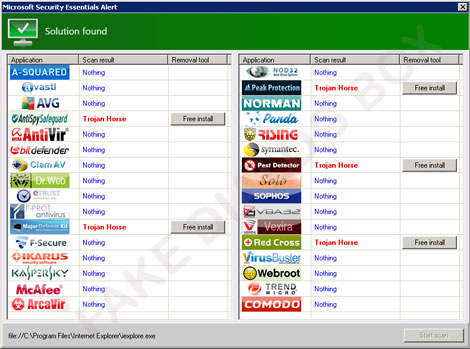
It may use any of the following GUIs:
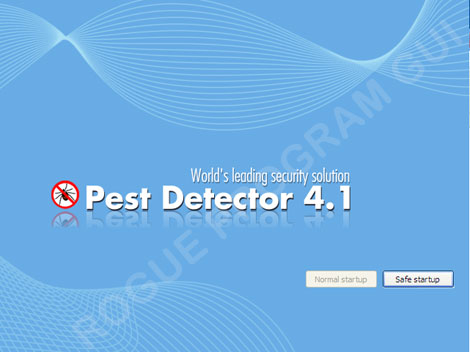
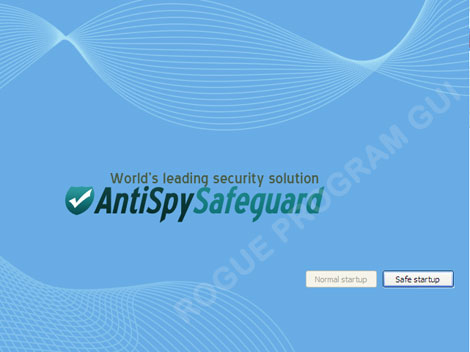
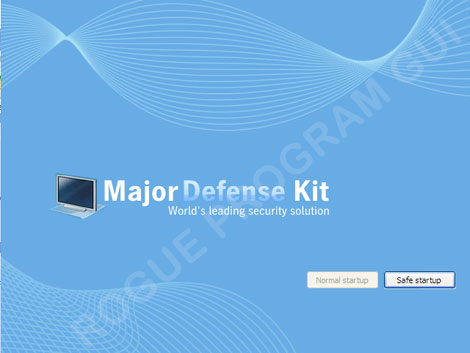
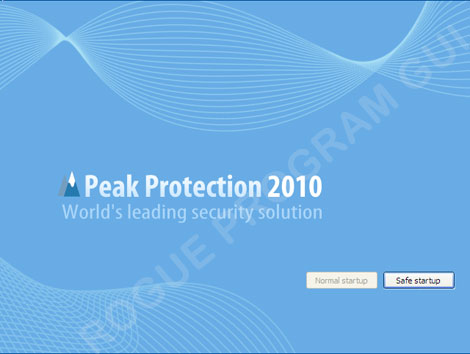
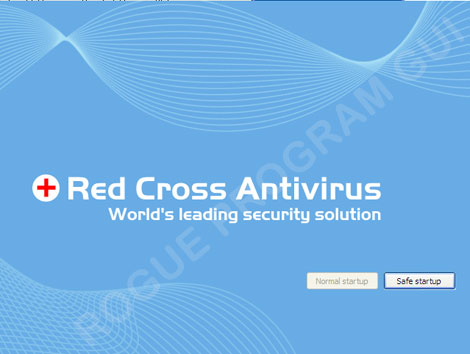
SOLUTION
Step 1
For Windows XP and Windows Server 2003 users, before doing any scans, please make sure you disable System Restore to allow full scanning of your computer.
Step 2
Identify and terminate files detected as TROJ_FAKEAV.KQWL
- If the detected file is displayed in either Windows Task Manager or Process Explorer but you cannot delete it, restart your computer in safe mode. To do this, refer to this link for the complete steps.
- If the detected file is not displayed in either Windows Task Manager or Process Explorer, continue doing the next steps.
Step 3
Delete this registry value
Important: Editing the Windows Registry incorrectly can lead to irreversible system malfunction. Please do this step only if you know how or you can ask assistance from your system administrator. Else, check this Microsoft article first before modifying your computer's registry.
- In HKEY_CURRENT_USER\Software\Microsoft\Windows NT\CurrentVersion\Winlogon
- Shell = "%User Profile%\Application Data\hotfix.exe"
Step 4
Delete this registry key
Important: Editing the Windows Registry incorrectly can lead to irreversible system malfunction. Please do this step only if you know how or you can ask assistance from your system administrator. Else, check this Microsoft article first before modifying your computer's registry.
- In HKEY_CURRENT_USER\Software
- PID
Step 5
Search and delete this file
- %User Temp%\skahgfhasd.bat
Step 6
Scan your computer with your Trend Micro product to delete files detected as TROJ_FAKEAV.KQWL. If the detected files have already been cleaned, deleted, or quarantined by your Trend Micro product, no further step is required. You may opt to simply delete the quarantined files. Please check this Knowledge Base page for more information.
Did this description help? Tell us how we did.



